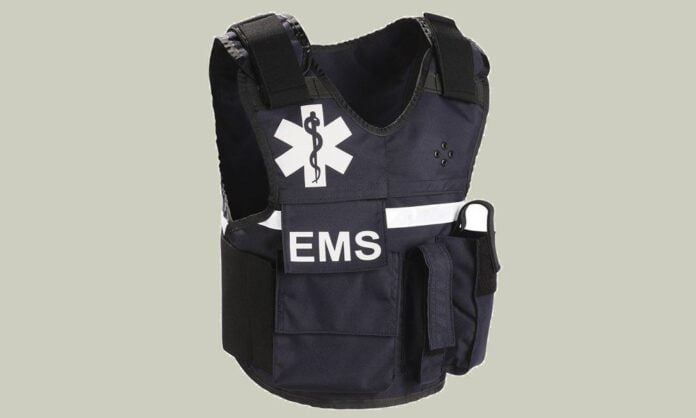EMS Should Understand The Threat Levels Of EMS Body Armor & Ballistic Vests
It’s important that EMS personnel familiarize themselves with the different kinds of body armor and why they should use it on duty. After all, EMS body armor have become much more commonplace in the workforce. The problem? Ballistic protection is something EMS personnel are not accustomed to wearing. And, that could be a real issue since it gives them a false sense of security.
If EMS personnel are provided with body armor, they should have a general idea of its design and how best to use it.
6 Standard NIJ Threat Assessment Levels For Ballistic Body Armor
The National Institute of Justice developed a Ballistic Resistance of Body Armor article, which sets the global minimum for performance requirements and testing methods for personal body armor when subjected to gunfire. Whenever body armor is issued, it’s necessary to know what the NIJ threat level is – something that should be found on the product’s label.
There are six general classifications of body armor, and knowing what kind of projectile a vest can withstand is necessary for protection.
Type I
This law enforcement and EMS body armor can protect users from lower velocity rounds like the ones from .380 ACP and .22 LR. The key reason people often choose this type is for their weight (light). However, the trade-off is that it doesn’t offer a whole lot of protection.
A big reason a majority of agencies will choose another kind of body armor for their personnel.
Type II-A
This body armor type offers protection against 9mm, .40 S&W rounds and similar higher velocity and mass ammunition. A number of law enforcement agencies feel this is the bare minimum full-time duty personnel need to wear for their protection and safety.
Type II
This kind of body armor is bulkier and heavier but offers up a great deal of protection for rounds that are high velocity and with 1400 feet per second. Think 9mm and .357 Magnum.
Type III-A
Law enforcement and EMS body armor of this type tend to get much better protection from guns that used jacketed hollow point rounds – .44 Magnum, high-velocity 9mm, etc. According to the NIJ standard, this has been determined to be the best protection against the majority of handgun rounds while still giving the wearer a low profile thanks to the concealed look it offers.
Problem? People generally avoid wearing them because of how bulky they are – the extra weight is often miserable to wearers who live in high humidity and hot temperature locations.
Type III
This level of body armor means the wearer gets protection from rifles and other high-velocity rounds, often used by people who face a tactical situation. This type of body armor isn’t designed for daily use.
Type IV
This body armor type offers up the highest protection level, manufactured with heavy, motion-limited ceramic plates that can resist armor piercing bullets. For that reason, it’s not considered as the typical EMS body armor.
What Are The Restrictions Seen With EMS Body Armor
Typical ballistic vests are manufactured so that the projectile’s kinetic energy is trapped and the energy is disbursed throughout a bigger surface, which ensures it doesn’t pierce the body and damage vital organs. However, ballistic armor doesn’t give the wearer much, if any, protection against stabbing weapons – knives, for example.
And, even though law enforcement and EMS body armor will absorb the bullet’s kinetic energy and doesn’t penetrate the body and vest, the wearer will still feel the blunt force trauma from the bullet.
The NIJ looks at the backface signature on different vests to come up with the distortion depth seen with the rear part sitting against the wearer’s body. Therefore, a doctor or other medical professional will need to look to see what kind of blunt force trauma the patient experienced while wearing the ballistic protection device.
Another limitation of body armor is protection from fragments that occur due to an explosion. While there is some protection from a secondary blast injury, there is none for a key blast injury that occurs due to a high order explosion.
No Ballistic Vest Offers Complete Protection
It’s important that people understand that there is no law enforcement or EMS body armor available that provides complete protection. Still, some type of protection is better than no protection at all, and if EMS personnel are using a body armor in the field, they should have an understanding of its limitations and protection levels. It’s also ideal that they practice their skills – vascular access, airway management, lifting and moving patients and other things – while wearing the body armor. By using them in practice settings, they’ll know what to expect in a real situation where the stakes are higher.






